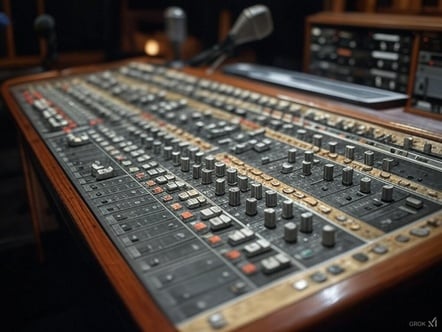New York, NY (Top40 Charts) From the first used sound of coins inside a slot machine into the deep, rich sounds of today's digital gaming platforms, the use of sound has drastically changed over time.
Sound is more than an auditory experience; it impacts engagement, fosters excitement, and can even influence player behavior. What changes have occurred concerning the evolution of sound design in modern digital casino entertainment reflect much larger developments that have taken place in technology, psychology, and the world of gaming.
The Power of Sound in Casino Environments
Step into a physical casino, and the experience is unmistakable- buzzing chatter, rhythmic slot machine pings, and triumphant victory jingles- all these would not just happen randomly; they are carefully orchestrated to maintain player engagement and excitement.
In moving from bricks and mortar to online casinos, software developers had to create copies with better audio to keep the attractiveness. Sound designers have put as much attention to detail into crafting a compelling audio experience for online casino.
The change to digital channels needed more than just copying real-life noises. While first web betting sites showed basic effects, dull beeps and simple coin-drop sounds, new digital casinos have lively audio systems that change with play.
Victory sounds are made to bring about happiness, while almost winning signals raise expectation, prompting more play. Advanced sound tools make sure that each click, spin, and payout helps improve immersive storytelling.
Psychological Influence: Why Sound Matters
Sound is not a mere addition to the aesthetics, it has a pronounced influence on the psychology of the player. Research on auditory perception has shown that some specific frequencies and patterns may trigger emotional responses. Therefore, casino sound producers operate with these principles, which allow them to influence player behavior in a very subtle manner. For example, a slow background tempo music may increase the speed of play, while the celebratory fanfares will strengthen cortical paths concerning the reception of rewards.
One controversial, yet effective, practice in sound design is the use of near-miss sounds.
When a player is about to win, just one symbol away from the jackpot, the sound cue is engineered to sound like a win as opposed to a loss. By triggering this illusion, it activates a part of the brain known as the dopamine system, which motivates players to keep on spinning as they chase after triumph.
The Technological Leap: From MIDI to High-Definition Audio
The early digital gaming products were supported by simple MIDI soundtracks low-fidelity and monotonous. Those were not the best ways to deliver content but satisfied the requirements for operation. With advances in technology, audio quality has also improved.
High-definition soundtracks, 3D audio, and changing music systems have become normal in the industry. 3D audio, especially, has greatly changed how players feel. In new internet casinos, sound works in a three-dimensional area, changing based on actions. For instance, in a live dealer match, a player's steps in a make-believe place impact how he or she listens to the dealer's voice or the mix of cards. This level of depth closes the sense space between real and digital feelings.
Sound and Branding: Crafting a Signature Audio Identity
More than interaction and mind games, sound has a key part in brand feel. Known audio branding is a strong tool; just picture the top new tune of a big tech firm or the happy noise of a good spin in one game.
Many producers of digital casinos put investment into their own unique soundscapes. These help in making their platforms stand out from other competitors. Brand sounds help create a sense of familiarity and may also generate loyalty. A player comes back to the online casino, so there will be those same friendly tone-setting sounds, which enforce the feeling of comfort.
On the other hand, those makers of slot games select or create music that goes along with the theme of the game. It might be a little creepy tune in one of those horror games set in a gothic atmosphere or perhaps a lively percussion rhythm in an action-adventure slot.
The Future of Casino Sound Design: AI and Interactive Audio
Artificial intelligence has been taking over every sector, and casino sound design is no exception. Through real-time data on individual players, artificially intelligent audio systems can customize soundscapes, adjusting types of music and effects happening at the time of play. For instance, if someone is winning, upbeat music might play louder. And as soon as the pace of play starts to slow down, the sound will change imperceptibly to try to keep the player engaged.
Another sector that is pushing the bounds of audio experiences is that of VR and AR. In a full-on VR casino, for example, sound would have it that it imitates and brings out realism: a player would hear the shuffle of chips on a table somewhere behind them or a cheer from some distance away upon the success of another gambler. Innovations of this kind will keep bridging experiences in the casino between digital and physical.
In Closing
What the sound design at the digital casino entertainment speaks of is the innovation and the need to keep the player engaged. This is because, from very simple and mechanical jingles, it has evolved, reaching a complex and immersive audio environment, which can enhance gameplay on every level.
Sound is one of the most basic building blocks that go into the psychology of the casino and the technological advancement of such places. It will continue to evolve with games themselves. Future casino sound design should be as dynamic as the industry that a casino serves, whether it comes through artificial intelligence-based personalization or full virtual reality environments.
























